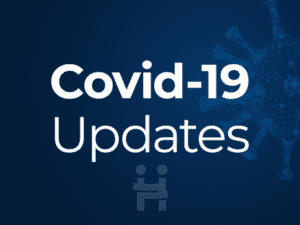Guidance for the extended CJRS released
After everyone clocked off for the day, at around 6pm on Tuesday 10th November the government released thirteen sets of updated guidance for the newly extended CJRS. Unhelpfully, the guidance is not in the same place on the gov.uk website but all thirteen links are included at the foot of this email. The first twelve refer specially to the CJRS and the thirteenth contains related guidance on shielding and protecting vulnerable individuals.
Employers who intend to place employees onto the CJRS between now and March are very strongly advised to read this guidance for themselves. Every businesses needs will be different and it will be important for employers to understand the implications for their company, not least because the new guidance states that employers who do make claims under the CJRS from 1st December will have their company details (name and registration number) published by HMRC. As yet, we do not know why this is the case, or the purpose/location of the publication.
When it comes to headline points, we can confirm the following:
- The government is reviewing whether employers should be eligible to claim furlough pay for employees servingf their notice and will change the current approach for claim periods starting after 1 December 2020, with further detail being published in late November. This is likely to mean that employees on extended notice periods put in place to maximise claims under the CJRS or, employees issued with notice/serving notice after 1st December may be excluded from the grant claim.
- There have been no changes to the level of government contribution under the Scheme and remain at 80% up to a maximum of £2,500 per month.
- Employers can claim for employees who were employed on 30 October 2020 as long as they have made a PAYE RTI submission to HMRC between 20 March and 30 October. For employees who have been re-hired after 23 September 2020 the relevant payment window is 20 March to 23 September.
- Employees employed after 30 October 2020 are not eligible to be placed on furlough.
- Employees returning from maternity leave need to give 8 weeks’ notice to end maternity leave early in order to be furloughed and get furlough pay.
- As we know, the employer must confirm in writing to the employee that they have been furloughed and keep a written record for five years. Updated template agreements have been uploaded to your Client Portal. Employers must read and complete these templates in accordance with the new government guidance to understand which sections are relevant for their employees.
- Employers can retrospectively furlough employees with effect from 1 November provided that the agreement occurs before this Friday, 13
- New legislation has been passed making clear that employees who are made redundant whilst on furlough/after furlough must have their redundancy pay based on their normal wage and not their furlough pay.
- Flexible furlough is still permitted with employees receiving wages for hours worked and furlough pay for hours not worked.
- Employees can take holiday during furlough. Any holiday taken during flexible furlough must count towards furloughed hours and not working hours.
- There is new guidance relating to furloughing employees on a TUPE transfer.
- There is very detailed guidance (including examples!) in terms of how to make a claim, what should be included in a grant claim and how to calculate an employee’s wages for the purposes of a claim.
- There is a full page of guidance dedicated to annual leave and furlough. It does not alter the current position as such, but it does give better guidance on any leave which is rolled over by two years because it was not reasonably practicable for the leave to be taken this leave year due to Covid-19.
- Employees with more than one job can be furloughed from all, some or none. They are entitled to separate grant claims for each employment.
- Employees who are unable to work because they are clinically extremely vulnerable or at the highest risk of severe illness from Covid-19 and following public health guidance can be furloughed as can employees who are unable to work because they have caring responsibilities resulting from Covid-19, including employees that need to look after children.
- The Coronavirus Job Retention Scheme is not intended for short-term absences from work due to sickness and short term illness/self-isolation should not be a consideration in deciding whether to furlough an employee. If, however, employers want to furlough employees for business reasons and they are currently off sick, they are eligible to do so, as with other employees. In these cases, the employee should no longer receive sick pay and would be classified as a furloughed employee.
Employers can claim back from both the CJRS and the SSP rebate scheme for the same employee but not for the same period of time. When an employee is on furlough, an employer can only reclaim expenditure through the CJRS, and not the SSP rebate scheme. If a non-furloughed employee becomes ill due to Covid-19, needs to self-isolate or shield, then the company might qualify for the SSP rebate scheme, where it can claim up to two weeks of SSP per employee.
As always, as we learn more about the mechanics of the extended Scheme and as more information is released we will be sure to update you as soon as we can. If you would like to discuss any aspect of this update however, please do not hesitate to contact a member of the Employment Team on 01274 864999.
—
Here are the links to the Guidance…
Guidance: Claim for wage costs through the coronavirus Job Retention Scheme
Guidance: Check which employees you can put on furlough to use the coronavirus Job Retention Scheme
Guidance: Steps to take before calculating your claim using the coronavirus Job Retention Scheme
Guidance: Calculate how much you can claim using the coronavirus Job Retention Scheme
Guidance: Claim for wages through the coronavirus Job Retention Scheme
Guidance: Reporting employees’ wages to HMRC when you’ve claimed through the Coronavirus Job Retention Scheme
Guidance: Examples of how to calculate your employees’ wages, National Insurance contributions and pension contributions
Guidance: Full examples of how to calculate the amount you should claim for an employee who is flexibly furloughed
Guidance: Check if you could by covered by the coronavirus Job Retention Scheme
Guidance: Pay Coronavirus Job Retention Scheme grants back
Guidance: Holiday entitlement and pay during the Covid-19 Pandemic
Guidance: Shielding and protecting people who are clinically extremely vulnerable from COVID-19
Guidance: Other types of employees you can claim for


